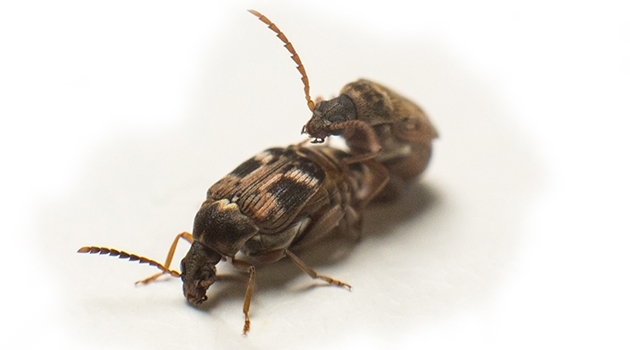Sex could be answer to 100-year-old question
For nearly 100 years biologists have argued about how exactly natural selection can possibly work. If nature selects the individuals with the best genes then why aren’t all organisms the same? What maintains the genetic variation that natural selection acts upon, the genetic variation that has ultimately led to the spectacular diversity of life on Earth today? Recent findings made at Uppsala University suggest that the answer could be sex.
Evolutionary genetic theory shows that genetic variation can be maintained when selection favors different versions of the same genes in males and females – an inevitable outcome of having separate sexes. That is, for many genes there may not be a universally ‘best’ version, but rather one is best for males and one is best for females. This is known as sexually antagonistic genetic variation, but it might only be maintained under a narrow set of conditions, limiting its prevalence in nature. However, Dr. Karl Grieshop and Professor Göran Arnqvist’s study, published in PLoS Biology, may change this view.
“One of the simplest ways for sexually antagonistic selection to maintain genetic variation in fitness is via sex-specific dominance reversal, where neither version of a gene is always dominant or recessive, but rather the version that benefits a given sex is also dominant in that sex. So, whether a given version of a gene is dominant or recessive to the other will depend upon which sex it is in,” says Dr. Karl Grieshop.
This mechanism was met with early skepticism, but has seen recent theoretical and empirical support.
Grieshop and Arnqvist have now provided the first evidence of sex-specific dominance reversal for fitness. Using a panel of genetic strains of a seed beetle population that Grieshop studied throughout his PhD, and analyzing crosses among these strains, they could determine which strains harbored genetic variation that was dominant to the others’. Further, they could do this with regard to male fitness and female fitness separately. When they ranked the strains according to their relative dominance over one another they found that strains tending to be dominant over other strains with regard to male fitness also tended to be recessive to other strains with regard to female fitness, and vice versa. Thus, whether the genetic variation for fitness in each of their strains was dominant or recessive to that of other strains depended, oppositely, on whether it was in a male or a female.
The pattern suggests that sex-specific dominance reversal for fitness is a strong and common phenomenon throughout the genome in their study population.
Full article: Grieshop, K., & Arnqvist, G. (accepted for PLoS Biology). Sex-specific dominance reversal of genetic variation for fitness. DOI: 10.1371/journal.pbio.2006810
Related articles:
Connallon T. & Chenoweth SF. (upcoming PLoS Biology Primer). Dominance reversals and the maintenance of genetic variation for fitness.
Dr. Grieshop defended his PhD at Uppsala University’s Institute for Ecology and Genetics (IEG) in September of 2017. He is now at the University of Toronto’s Department of Ecology and Evolutionary Biology as a Faculty of Arts and Science Postdoctoral Fellow, and he is a recent recipient of an International Postdoctoral Fellowship from the Swedish Research Council (VR), which will extend his stay in Toronto before returning him to Sweden. Professor Göran Arnqvist – Grieshop’s PhD supervisor – is the chair of the Animal Ecology program at IEG, and the study was funded by his research grants from the European Research Council and VR.
Linda Koffmar

